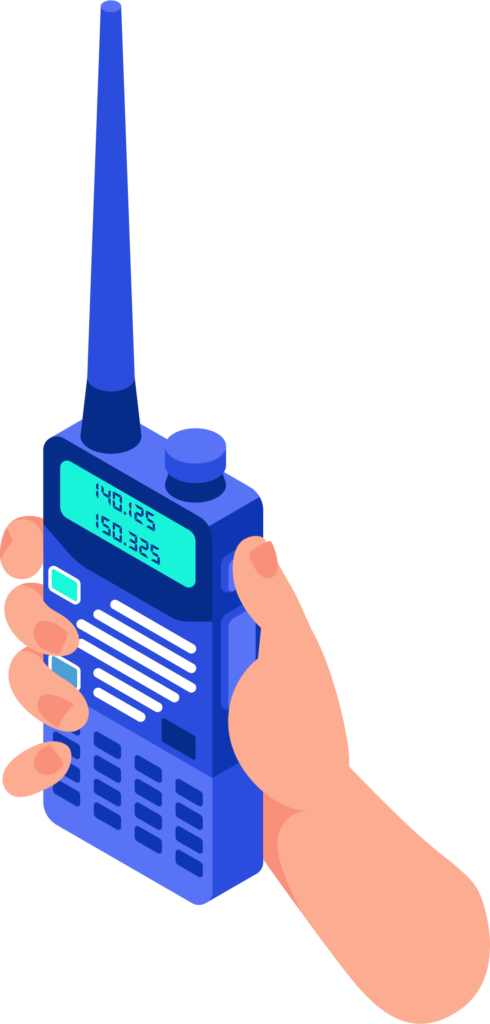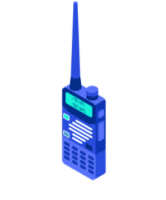In this article:
Baofengs and other import radios work well for amateur communications
You’re studying for your Technician class FCC license with Ham Radio Prep’s online system or you just recently got licensed and now you want to get ready to be on the air! What’s the cheapest and fastest way of getting on the ham bands? You’re scanning the ads from amateur radio dealers and finding that basic VHF and UHF amateur handheld and mobile radios cost anywhere from $100 to as much as hundreds of dollars. Is there a way to get on the ham hands on a budget?
Today’s international marketplace allows you to not only get on the air for cheap, but the offerings available can prove mind boggling. What’s the best equipment for beginning ham operators? If you poke around on sites such as Amazon, AliExpress and Wish, you’ll find so many types of radios that would work for new Tech licensees.
Chinese and import radios offer an advantage for new hams: Price!
The primary manufacturers of ham radio transceivers have been around a long time: Yaesu, Icom, Kenwood and Alinco. But the global marketplace also now has players such as Baofeng, Wouxun, Anytone, Retevis and many more names. While their international market includes two-way radio users all over the world, these world manufacturers and marketers also know that their products have found their way into the hearts of hams not only in the United States, but many other areas of the world, too.
While you can pay $100 to $200 for a ham handheld radio made by the ham radio big four, you also can get on the air very easily and cheaply with a basic import handheld radio for as low as $12! Did we say $12? YES!
Use a computer to program your radio
The Baofeng BF-888S, which is similar to the Retevis H777, sells for anywhere from $10 to as much as $25 (Google is your friend!) and offers 16 channels on UHF, which for hams would be the 440-450 MHz band where most repeater and simplex communications occur in the overall 420-450 MHz USA ham band. You’ll need a programming cable (sells for $5 to $15) and a computer with the radio’s free software available for download online to program the transceiver.
A step up above the single-band UHF handheld is a dual-band radio such as the Baofeng UV-5R handheld (and its many derivatives), the most popular of all Chinese and import radios. This radio sells online for anywhere from $20 to $35 and offers full coverage of the ham 2-meter and 440-MHz bands. The caveat is that these radios also will program on commercial and public safety frequencies, if you have such a need for dual duty.
While radios such as UV-5R or sister UV-82 can be programmed by hand instead of using a computer, you will find it much easier to use the programming cable with a computer to get many frequencies programmed for local service. You’ll want to program all your local VHF and UHF repeaters, as well as simplex frequencies such as 146.520 and 446.000 MHz.
Are Baofeng radios OK for ham use?
Ask a ham if a Baofeng radio is OK for use on ham radio and you will hear two responses:
1) No, because they are cheap junk, and
2) Sure, I have one myself.
You’ll see that hams are either for or against import radios, depending on their opinion of them. Don’t let that sway you. Go with your budget. If you can afford one of the big-four ham rigs, go for it. If you want to save some money, go with an import radio and see how it works for you. You can always upgrade later to ham gear or even commercial two-way equipment (which is legal on ham bands). There’s nothing wrong with spending $25 to get your feet wet. You’d be surprised to find many hams own an import radio either for their primary radio, a backup radio or even for their bugout kit for emergency response.
Watch the power output claims on import radios
“Your mileage may vary” and the power output of import handhelds also may vary. The Baofeng BF-888S handheld might be advertised as having 5 watts of power, but you’ll more likely see a power output of anywhere from 1.5 to 3 watts. The UV-5R typically is advertised as 5 watts output, but you may find it to be more like 4 watts. Beware of versions that claim power output of 10-15 watts because you’ll more likely see just 8 watts. Again, Google is your friend when you are researching models to purchase.
Ham radio doesn’t have to be an expensive investment for new FCC Technician class licensees! Spend just a little and get on the air quickly. If it works for you, get a mobile antenna or a better handheld antenna, a spare battery, a 12-volt vehicle adapter or a handheld microphone — all total for less than the cost of an actual ham handheld if you were to purchase all those accessories.












